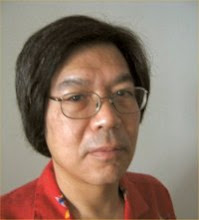It turns out that DCP (Digital Cinema Package) is not such a stable medium, after all. Today, one of the three movies press screened as part of this year's "Rendez-vous With French Cinema" turned out to be defective - it came without subtitles. So it was screened with a warning about the lack of subtitles. The film was "Bang Gang" directed by Eva Husson (which i really liked; i know there are similarities with Larry Clark's work, but it had a softer edge, the fact that it was written and directed by a woman made a big difference - it wasn't trying to shock you and drag you down). Turned out it wasn't too difficult to understand: my rusty French was just enough to keep me informed as to what was being said, and the film was pretty straightforward in terms of its narrative development. In fact, there's one scene where the kids are taking a Spanish class... and i understood that scene even better than i did the French, and i don't even know Spanish!
"Rendez-vous With French Cinema" is always one of the most popular series for the Film Society of Lincoln Center; when the Walter Reade Theater opened, and there was the first year's worth of screenings, it turned out that any French movie seemed guaranteed to garner an audience (especially an audience in the Upper West Side in the 1980s - it was the holdover of the movie audiences that had been used to seeing French films at the New Yorker Theater). But this year, there's also a sadness: one of the regulars that i would always talk to was Ronnie Scheib, the critic for Variety who died in October, 2015.
But that reminds me that in September, Ruth Emerson Wortis died. And when news of her death came, it turned out that, though her name is legendary in terms of the history of the Judson Dance Theater (Robert Ellis Dunn always credited Ruth for bringing up the idea of consensus as a means to discuss work, rather than immediate critique; Ruth was also the third person who went to the Judson Church, to meet with Howard Moody, the minister of the Church at the time - the other two were Steve Paxton and Yvonne Rainer), very few of the people who have researched the Judson Dance Theater ever met her. (She got married and moved to Canada by the end of the 1960s.) But it turned out, i knew Ruth Emerson: i met her in 1974! That was the summer when i graduated from Columbia University, and i was looking for a job; while i was sending out resumes, one thing i did that summer was volunteer at Elaine Summers' Experimental Intermedia Foundation. And during that summer, Ruth Emerson (who had hurt her back) came to Elaine's studio, for Kinetic Awareness work, to help her keep her back limber. One thing i remember was that she had been very close friends with Trisha Brown, which dated back to the time they spent with Anna Halprin. (I recently learned that she had been a close friend of Elizabeth Keen - they had gone to college together.)
When Wendy Perron, Cynthia Hedstrom and i did the Judson Dance Theater Reconstructions in 1982, i know i contacted Ruth Emerson, but she was hesitant about trying to recreate her work. Mostly it was because a lot of her own work had been solos (though she performed in a lot of people's work - Carolee Schneemann, Elaine Summers, Trisha Brown's group pieces, etc.) and there was a lot of improvisation in those pieces, and she had a hard time thinking of how she would teach someone else to do those dances.
There were so many people that i would meet then, but i'm glad i got to know her, even if it was only in passing.
The recent "Picasso Sculpture" exhibition at The Museum of Modern Art reminded me of the huge, museum-wide Picasso retrospective MoMA had in 1980 (when i was working there). One thing that happened during the exhibition was that the Department of Film got requests from film people to attend the exhibition. Quite frankly: what would happen was that the people would call to ask if they could get in, and we would make arrangements: they would be directed to come up to the Film Department offices, and one of the staff would then escort the visitor (with a visitor pass) through the exhibition. Usually it was to take them to the beginning of the exhibition, and then they could go off on their own. I remember that we all took turns, though there were exceptions: Steve Harvey made sure that he was the one to meet Audrey Hepburn. I remember that Steve Soba had to come in on a Saturday for Barbra Streisand. I got a lot of the younger actresses who had recently been nominated for Oscars, such as Jill Clayburgh and Talia Shire. Margareta Akermark, who was retired from the Film Department, somehow liked me, and so she had a number of people get in touch with me in order to see the exhibit. Those people turned out to be the women who were known for starring in Ingmar Bergman's movies. So that was how i met Ingrid Thulin, Bibi Andersson, Harriet Andersoon, Liv Ullmann, and Gunnel Lindblom. I remember, after i met them, i was puzzled by the gloom in Bergman's movies. If i'd slept with "all those women" (as Bergman titled his bizarre attempt at a farce), i would have been one of the happiest men on earth!


1 Comments:
This comment has been removed by a blog administrator.
2:34 AM
Post a Comment
<< Home